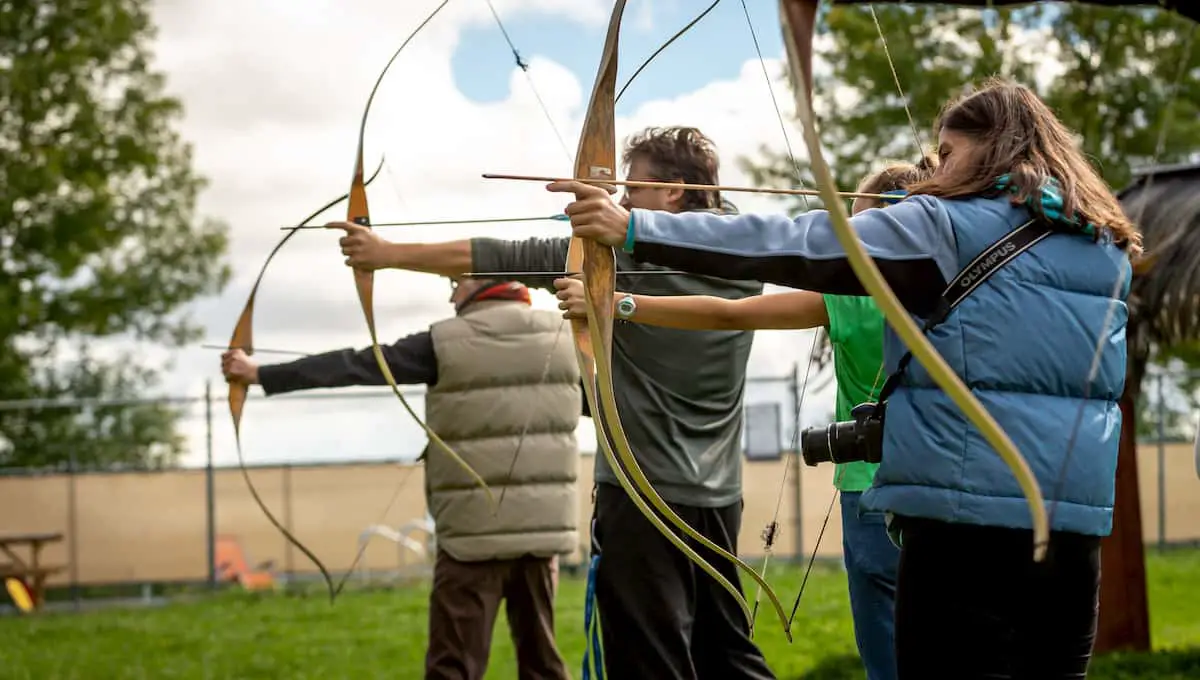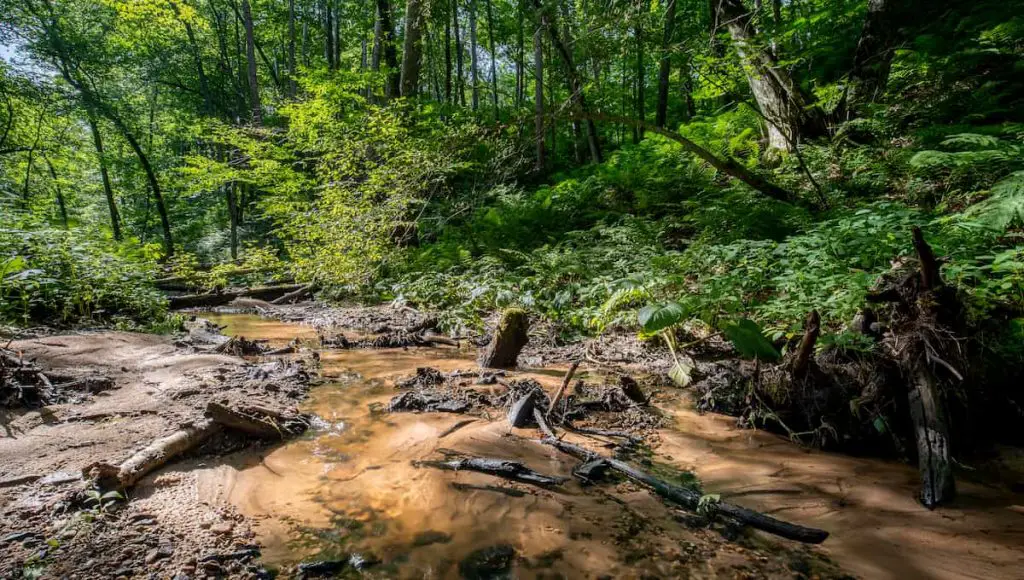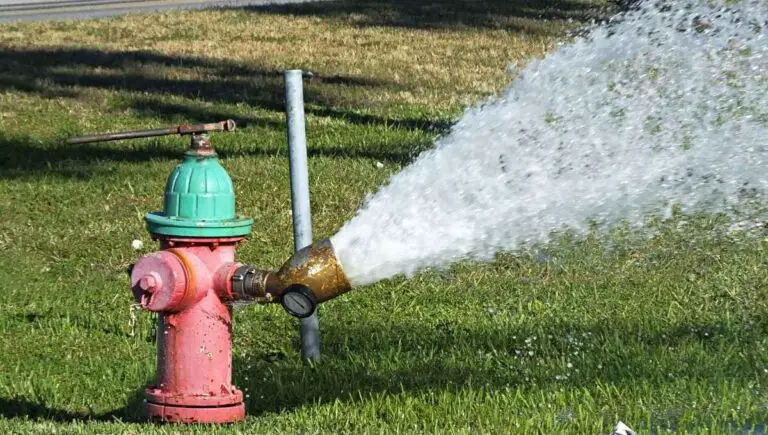How to Find Arrowheads in Your Backyard

Treasure hunting is an exciting and rewarding experience you can do anywhere. One popular item treasure hunters love is the arrowhead. If you enjoy looking for arrowheads or are just starting out with this fun hobby, you definitely want to learn our tips and tricks on how to find arrowheads in your backyard the right way.
Some people are lucky enough to find arrowheads on their own property, while others visit potential sites like somebody else’s farms or the woods for these precious finds. Creek walking for arrowheads, for instance, is a popular and enjoyable way of hunting for artifacts, and at the same time, exploring nature.
In the United States, the eastern and western parts were once home to Native American tribes. That means these people left behind some tools and artifacts that are now considered valuable. Generally, arrowheads can be sold online for anywhere between $10 and $20. Still, those who go out looking for them are not doing it to get rich but rather searching for pieces to add to their collection.
Wherever you decide to do your search and whatever purpose you have, it’s important to understand the guidelines for arrowhead hunting, how much they’re worth, and everything there is to know about the item to make your hunt easier and more exciting.
What Is An Arrowhead: The History
Before mankind learned how to operate machines and sophisticated metal tools, early hunters shaped rocks to give them pointy tips and use them as working tools. These sharpened rocks were attached to an arrow shaft, making them deadlier and more effective for hunting and war.
Arrowheads (referred to as projectile points by scientists) were important weapons for early Native American tribes. These tribes often fought against members from different neighboring tribes when early colonists came to their land.
The tribes then shifted their focus to making sure the foreigners never stepped foot on their property, and arrows as well as arrowheads helped them in that mission.
Apart from warfare, bows and arrows were mainly used to hunt animals, even those as large as an elk or bison. The early hunters would often hunt either on horseback or on foot.
Using a bow and arrow, however, did not start until sometime in A.D. 500. In Iowa, it had already been 11,500 years after the first settlers came to the region that the bow and arrow were used.
This choice of weapon replaced spears due to several advantages. For instance, arrows are much lighter and quieter, allowing warriors to rapid-fire and strike with stealth. Using arrows provided more mobility and better accuracy.
Additionally, crafting arrowheads didn’t involve using up as many raw materials compared to spears.
What Are Arrowheads Made Of?
Among the many Native American tribes, arrowheads were made of flint, obsidian or chert. Bone, shell, wood, copper, and horn were also used as materials in making arrowheads.
When it comes to arrowheads, It’s not just about the type of material but also its availability. Many hunters would use whatever material is available when making arrowheads.
When talking about arrowhead hunting these days, we generally refer to those that were made from stones. They tend to last longer compared to bone or antler so you’ll most likely find some in your backyard or in areas where Native Americans once set camp.
These stone arrowheads and other Native American tools made from rock withstood the tests of time only to be found by modern men.
Since different stone types were used, you still need to factor in the area where you are hunting to know the different types of Native American arrowheads. For instance, you will mostly find obsidian arrowheads in the Northwest or other western parts of the U.S.
Other common stones found to be used by Native Americans in making arrowheads include quartz, petrified wood, agate, and chalcedony.
What Kind of Arrowhead Do I Have?
When you are looking for arrowheads, you may feel compelled to identify each one, especially if you’re doing it for your collection. As a treasure hunter, you’ll definitely want to know more about your different finds.
The internet is a great place to help you if you want to know how to identify arrowheads, but books also make great resources too.
There is an awesome book on Indian Arrowheads called The Official Overstreet, that provides a comprehensive guide on identifying and pricing your artifacts. This book offers more than 60,000 images provided by collectors.
If you need a resource guide for comparison, The Official Overstreet is going to be an amazing reference to check out.
There are also two factors to help you identify the treasure you just found: shape and location. Knowing both should help you narrow down the identification process. For the shape, you can either find a lanceolate, stemmed or notched (and more), which will be explained below.
Knowing where you found your arrowhead will also help you identify what kind of artifact you have. Some arrowheads are specifically found in a certain state and cannot be found elsewhere in the region.
This would help with narrowing the identification process. ProjectilePoints.Net and typology.arrowheads.com are excellent resources providing you with a database of arrowheads found in every state or region.
Types of Native American Arrowheads According to Shapes
If you’re a beginner at arrowhead hunting, you might think that it’s hard to spot the difference between a rock and an arrowhead. After all, arrowheads are made from stones. So how can you tell?
It’s rather easy: just look for a point, a base, and an edge.
Classifying the different arrowheads will basically involve looking at its edges or the presence or absence of a notch on the base.
While there are different shapes, 8 common shapes have been identified.
- Auriculate – this type of arrowhead resembles a fish and includes “ears” or auricles pointing downwards
- Lanceolate – this has a concave, convex or straight base and doesn’t have notches or shoulders.
- Corner notched – derived from its name, this arrowhead has corner notches on its base
- Side-notched – towards the end-base, there are side notches intended for hafting
- Stemmed – Stems can either be long or short, contracting or expanding. All stemmed arrowheads have shoulders
- Stemmed-bifurcated – the base bifurcates or splits into two
- Basal-notched – notches form at the base
- Arrow points -this type of arrowhead is generally shaped like a thin triangle and is usually small.
There are other shapes of an arrowhead, which make them unique and interesting. Check out this complete database of arrowhead shapes and sizes to guide you on your arrowhead identification.
How Much Are Arrowheads Worth?
Most hobbyists or even those who want to start their own arrowhead collection would like to know about an arrowheads value. You may ask “where can I sell my arrowheads?” or “is it worth anything?” Financially, not so much, but that doesn’t mean finding one in your backyard or elsewhere is for nothing.
An online platform like eBay is a great place to buy and sell arrowheads. As mentioned earlier, an arrowhead can be priced between $10 and $20. The Official Overstreet book will provide a valuation guide for your arrowhead. Despite the listings found on the guide, it can be challenging to find a dealer willing to pay a high price for an arrowhead.
Though the general price for common arrowheads may not be that much, there is still a chance for an arrowhead to fetch thousands of dollars, especially if it’s rare and comes in excellent condition free from cracks and chips. The most expensive arrowhead ever found was the Rutz Clovis Point, which was sold to a Texas collector at a 2013 auction for $276,000. This does say arrowheads have value and can be worth good money when you have an authentic one in your hand.
Meanwhile, an arrowhead’s value is not just measured financially. Many arrowhead hunters do it for the satisfaction and excitement of having found something – whether in their backyard or areas where Indian campsites were.
Imagine digging through your garden when you wanted to give your backyard a makeover and stumbling upon an arrowhead – it’s a rewarding experience. There is that sentimental value of finding one and turning it into a collection.
Where To Look for Arrowheads?

After reading some facts and information about arrowheads, you might be excited about going on an arrowhead hunting adventure. If your fascination with arrowheads led you here, that means you might want to know where to find arrowheads, starting in your backyard. There have been many instances in which homeowners were surprised by their backyard finds.
Meanwhile, if you don’t have any luck finding one on your property, there are other potential sites to consider.
You’re not alone when wondering about “places to find arrowheads near me.” Below are some tips on some of the best places to find arrowheads.
Where to Find Arrowheads in Tennessee
Tennessee is rich in archaeological sites and if you’re living in this state, you might just stumble upon one (or some) in your backyard or other people’s yard – with permission, of course. However, if you happen to encounter artifacts like arrowheads in Tennessee public lands, you have to know that it’s illegal to pick them up.
You might also be tempted to take the item with you – after all, who’s watching? But the Tennessee Valley Authority (TVA) does have a program in place called A Thousand Eyes, which is supported by local community volunteers who will keep watch of archaeological sites in the area.
How to Find Arrowheads in a Creek
Creeks are popular spots to hunt for arrowheads but they are usually located along a private property. So before you embark on an arrowhead search, seek the landowner’s permission. Looking for arrowheads in creeks is best done in the upper portions, where ground erosion’s happen so quickly.
In these parts of the creek, you’ll likely find artifacts, rocks and other debris washed up. In contrast, the lower parts have fine sediments or mud that usually hide whatever artifacts there may be.
Time your creek walking for arrowheads accordingly. The ideal time is right after a heavy rainfall. Of course, it’s important to observe safety when you’re hunting for arrowheads. Wear safety gear like non-slip footwear and bring a mobile device for emergency cases.
Finding arrowheads in creeks is better and much safer when done in groups rather than doing it alone. Most importantly, this activity should not be done when it’s near nightfall or when currents are strong.
Another tip when hunting in the woods is to spot an area where more than 2 creeks or streams come together. Not only are these potential Indian camps but they make perfect hunting locations for early settlers.
It can be a bonanza actually, since places like these are teeming with activities from settlers. They would not have only set up camps but also lived there for extended periods. This is an ideal place to stumble upon arrowheads and other artifacts, like pottery.
Areas where creeks and streams come together also mean a place where animals come for a drink. That means it’s also a hunting ground for the tribes.
How to Find Arrowheads in a Field
Another great place to find arrowheads is in a farm field – a freshly plowed one. When finding arrowheads on farms, go for fields that are located near a stream of water or flowing spring. Think about the Native Americans in those times – they needed water to survive so the set camp near water sources.
Since you’ll be visiting farmland (mostly someone else’s farm), you have to obtain the owner’s permission. Once you get the nod, wait until after the fields have been tilled or wait after a rainfall.
How to Find Arrowheads in the Woods
You can’t just venture out into the woods hoping to find an arrowhead. You have to prepare for your search whether you’re sticking to a trail or exploring the deeper parts of the woods. Your preparation should involve thinking about what to look for to find Indian encampments.
Tips on How to Find Native American Campsites
You can try to envision as if you were one of the members of a tribe. That would mean you need a spot where you are surrounded by resources that are important for your tribe members’ survival.
Camps are usually set up near a water source or where there is natural shelter like rock overhangs. Also, try to find elevated places where there is an overlooking of water sources. Camping grounds will likely be set up there instead of on the water to avoid flash floods. These clues should help you in your search for arrowheads or even Native American artifacts.
General Tips for Finding Arrowheads
Looking for arrowheads may seem difficult but with enough preparation, you should not only find it exciting but also easy. Here are some general tips for finding arrowheads.
#1. Do your research
This is the most important tip when looking for arrowheads. Start with learning about the different Native American tribes in the U.S. Some tribes farmed the lands peacefully while others created tools to catch fish. All of them share one thing in common: they hunt and trap animals for food.
As part of your homework, study the tribes in your area either by visiting the library, purchasing books or doing thorough research online. Read up and understand their way of life, their movements and the events in history that drove them to change settlements.
#2. Be familiar with the laws of artifact hunting
Don’t set out on a quest for arrowheads without reading up on laws about artifact hunting. If you don’t take time to be familiar with the laws, you might be at risk of being jailed or having your finds confiscated. It’s best to avoid issues by doing some reading on how to legally hunt for artifacts.
#3. Hunting on Private vs Public Lands
Trespassing is an offense in all 50 states of the U.S. and you don’t want to find yourself in a legal issue when searching for Native American artifacts. When hunting in private lands, always make sure you get the owner’s permission.
As a general rule, you are not allowed to collect artifacts from public lands that are more than 100 years old – and an arrowhead falls into that category.
Some archaeologists, however, say it’s okay to pick up arrowheads when they show up on ground surfaces. But if you really analyze the law, picking up the item if it’s already on the surface is still considered illegal.
As an important tip, understand the text found on the Archaeological Resources Protection Act of 1979. Just to be on the safe side, avoid hunting on public lands and if you do your search on private lands, ask and obtain permission.
#4. Find the Water Source
Native Americans usually build their settlements near rivers, creeks and lakes. They weren’t necessarily built next to the water but just close enough for them to have easy access. A water source is a big clue for your arrowhead hunting.
#5. How Deep Are Arrowheads Buried?
Many arrowhead hunters discourage digging for artifacts for several reasons. For one, you need to obtain fool-proof permission to dig a site. Another is that you may not know you’re already on sacred ground or you could be disturbing a burial site.
Digging is best left to professionals to preserve whatever valuable information an archaeological site has to offer. Generally, you don’t have to dig to find arrowheads; you just have to wait for soil erosion to bring you a surprise. Your best bet of finding an arrowhead in your area is to go to where a Native American village or campsite once was.
#6. Know When to Go On an Arrowhead Hunt
If you want to be consistent in finding arrowheads, time your treasure hunt. The best season to do a search is during springtime when the ground is soft to the touch and the topsoil has been washed away.
In the summer, the ground is hard while in winter, it’s covered in snow, making artifact finding rather difficult.
#7. Don’t give up
The first hunt won’t always be successful. Don’t give up just yet. Just because you didn’t find an arrowhead in a potential site, doesn’t mean you should abandon your hunt.
Continue your search and if you’re doing it on a field with the farmer’s permission, just continue each time the land has been plowed or after the rain has fallen.
#8. Clean up and catalog
Rinse your find in cold water and wash with dish soap. Using an old toothbrush, gently remove dirt found on the surface. Do not scrub as this could remove the patina, which will reduce your arrowhead’s value. With the help of an online arrowhead database, catalog your finds.
#9. Keep in mind the ever-changing landscape
When going for a search, remember that the landscape can be different 500 or even thousands of years ago than what you see now. You may see a pond today but it’s possible that it was once a dry meadow. Dry areas, which you may likely skip, could have been ponds many years ago. If you’re unsure of the landscape you’re investigating, find some evidence indicating the existence of old Indian camps.
Recap: Finding Arrowheads in Your Area
If you live in a state or area where Native Americans once lived, you’ll have higher chances of finding arrowheads. As a recap, here are the important things to remember:
- If your house is located near rivers, creeks or lakes, you’re more likely to find arrowheads
- Searching for arrowheads on private property is legal as long as you have permission from the owner
- Arrowhead hunting on public lands is illegal and can get you jailed
- Digging is considered controversial and is best avoided. Wait for soil erosion or rainfall instead to find arrowheads
- If you don’t find an arrowhead in your own backyard, move on to other potential sites
- There are different types of arrowheads, giving you so many possibilities. Refer to online databases to help you in identifying what you have.
- To be more successful with your hunt, extend your knowledge on different Native American tribes, their history and locations. Do some reading and research or join organizations that can help you in that field.
- The number of arrowheads left across the U.S. remains unknown. There are still many waiting to be found.
- Arrowhead hunting should be a fun and rewarding experience. Good luck!






